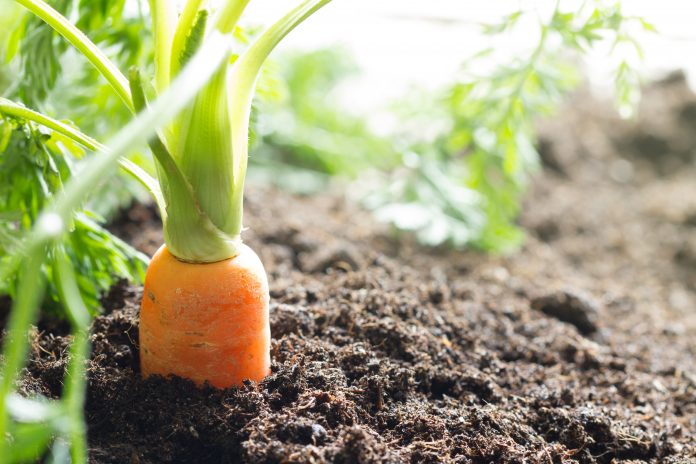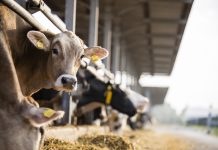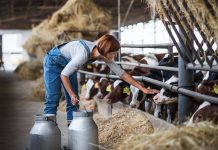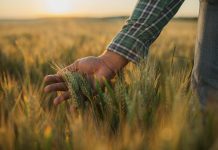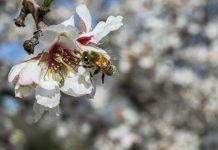Lynn Brandenberger, Professor of Horticultural Food Crops, Oklahoma State University and Ajay Nair Associate Professor Extension Vegetable Specialist, Iowa State University, discuss the importance of soil care for crop production, particularly when it comes to soil organic matter
Why should people be interested in being caretakers of soil? No matter whether we have a plant-based or animal-based diet, soil is where it all originates. Feeding the soil to feed the plant is a basic principle of sustainable farming system. Therefore, it behoves us to be good caretakers of soil to ensure future supplies of food and fibre. When food and fibre supplies are scarce, societies won’t survive long, and life can easily go from a semblance of order to chaos.
Soils are foundational to our food production system while also providing other critical services related to water, air and climate. Soils consist of inorganic and organic materials in a matrix that also includes materials in liquid and gaseous forms. The inorganic comes from rock (parent material) that eventually weathers to become what we think of as soil particles (sand, silt, clay) which determine soil texture. There is little that we can do to change soil texture meaning that on a field basis the percentage of sand, silt, or clay in the soil will more than likely remain unchanged. Organic matter comes from plants, microflora (fungi, bacteria, protozoa), and animals. Soils serve as a bank for carbon to the extent that some have estimated that worldwide, soils hold four times the amount of carbon in the environment than living plants (Magdoff and Van Es, 2009).
Organic matter
Soil organic matter is one of the primary indicators of soil health and is fundamental to the long-term sustainability of agroecosystems (Larkin, 2015). Organic matter (O.M.) can alter the physical, chemical, and biological characteristics of soils.
Additions of O.M. can increase biological activity in the soil to improve plant nutrient availability (mineralisation of O.M.), detoxify soil pollutants (bioremediation), increase soil particle aggregation that in turn increases the uptake and storage of water, and it can improve soil tilth (workability). Organic matter is constantly being mineralised by soil microbial life and as such crop producers need to consider that additional O.M. will need to be added regularly to keep the balance of carbon in the soil. Intensive crop production practices are not favourable for preserving O.M. and soil quality as they may result in soil erosion, soil organic matter (SOM) depletion, structure deterioration, increased greenhouse gas emissions, biodiversity losses, and lead to poor soil quality, and reduced crop yields (Stavi et al., 2016). Much has been written regarding the loss of productive agricultural soils to erosion, the loss of organic matter, and losses due to urbanisation. Soils that have been over cultivated and damaged can be reclaimed through the addition of organic matter, therefore it is possible to regenerate soils that have become unproductive.
There is a wide range of sources to consider when adding organic matter for improving soil fertility, quality, and health. Each farm has its own unique soil types, sources of organic matter, and equipment for applying and incorporating O.M. Decisions should be based on cost, availability, convenience, and generally what works best for a particular farm. Sources could range from compost, manures, animal litters, to cover crops and other plant-based materials. One potential issue for sources is whether the material being considered for use may contain herbicide residues. This is especially true when using grass-hay, grass-clippings or compost made from either if they were treated with herbicides. A simple bioassay test using a sensitive species such as tomato or spinach to test for the presence of herbicide residues is a good practice.
Other factors affecting organic matter selection could include time and space for composting, food safety hazards connected to manure-based soil amendments, and storage of materials prior to application. Cover crops are an alternative to the aforementioned O.M. sources but consider that growing cover crops will remove field areas from production during the time that they are grown. Therefore, there are no clear-cut alternatives for improving soil O.M., each should be carefully considered prior to use. Organic amendments, including manure, cover crops, and compost, contribute to improved soil quality and health as they enhance the activity and abundance of organisms that decompose them in the soil (Nair and Ngouajio, 2012).
Research studies on soil
Research into increasing soil O.M. may include different tillage systems and the addition of organic matter to improve the soil. In Oklahoma, we have investigated cover cropping for improving soils comparing different cover crops to a fallow system with no addition of organic matter. Although results have not been dramatic, we have seen a slow but steady rise in soil organic matter levels in the cover crop treatments and have seen a significant decrease in O.M. in the fallow system. The jury is still out on crop yields, but there is a trend toward higher yields.
Raimbault and Vyn (1991), reported increases in corn yields from crop rotations compared to continuously cropped corn with different cultivation practices also varying in yield. Their most dramatic differences in yield were recorded for crop rotation combined with a minimum tillage system. A study in western Colorado U.S. reported less erosion, improved water infiltration rates and higher soil water content with conservation tillage methods compared to conventional tillage (Ashraf et al. 1999). In Iowa, cover crop-based conservation tillage systems have been shown to be viable options for organic broccoli and pepper production (Jokela and Nair, 2016).
Studies in Connecticut indicated that amounts of soil organic matter had a direct effect upon productivity with increases in soil O.M. stocks directly relating to increased productivity (Oldfield et al. 2018). In the U.K. Johnston (1986) reported higher yields on soils that received extra organic matter in both sandy and silt loams, soils with higher O.M. had improved water holding capacity, increased nitrogen availability and better response to nitrogen fertiliser.Overall, there is a large body of evidence that confirms that the addition of organic matter (manure, compost, cover crops, mulch, etc.), and reduced tillage improves soil physical, chemical, and biological properties and increases organic C pools in the soil. A systems approach to production is necessary to identify and understand the significance of the linkages between grower practices and their implications on crop growth, yield, productivity, soil quality and health, and the environment.
In vegetable production systems, the diversity of the enterprise, size and scale of the farm, soil type, market and labour demands, and climatic conditions provide unique opportunities and/or barriers to improving the overall sustainability of our cropping systems. Several grower-led organizations and professional societies such as the Soil Science Society of America, American Society for Horticultural Science, International Society for Horticultural Science, Entomological Society of America, American Phytopathological Society, European Society for Soil Conservation, and several other soil science societies in Europe, are all working to preserve and protect the current agricultural system.
As we move forward with our shared goal of building resilient soils, we need to acknowledge that much work is needed to help producers develop and adopt production practices and strategies that enhance the overall productivity of their cropping systems without compromising the economic, social, and environmental sustainability of their communities.
Citations:
Ashraf, M., Pearson, C., Westfall, D., and Sharp, R. 1999. Effect of conservation tillage on crop yields, soil erosion, and soil properties underfurrow irrigation in western Colorado. American journal of alternative agriculture, 14(2): 85-92.
Johnston A.E. 1986. Soil organic matter, effects on soils and crops. Soil Use and Management, Volume 2, issue 3: 97-105.
Jokela, D. and Nair, A., 2016. Effects of reduced tillage and fertilizer application method on plant growth, yield, and soil health in organic bell pepper production. Soil Tillage Research 163:243–254.
Larkin, R.P. 2015. Soil Health Paradigms and Implications for Disease Management. Annual Review Phytopathology Vol. 53:199-221.
Magdoff, F. and Van Es, H. 2009. Building soils for better crops sustainable soil management-sustainable agriculture research and extension handbook # 10.
Nair, A. and Ngouajio, M. 2012. Soil microbial biomass, functional microbial diversity, and nematode community structure as affected by cover crops and compost in an organic vegetable production system Applied Soil Ecology 58:45– 55.
Oldfield, E.E., Wood, S.A., and Bradford, M.A. 2018. Direct effects of soil organic matter on productivity mirror those observed with organic amendments. Plant Soil 423: 363–373.
Raimbault, B.A. and Vyn, T.J. 1991. Crop rotation and tillage effects on corn growth and soil structural stability. Agronomy Journal: 83: 979-985.
Stavi, I., Bel, G., and Zaady, E. 2016. Soil functions and ecosystem services in conventional, conservation, and integrated agricultural systems. A review. Agron. Sustain. Dev. 36:32.
Ajay Nair
Associate Professor Extension Vegetable Specialist
Iowa State University
Tel: +1 515 294 7080
www.extension.iastate.edu/vegetablelab
*Please note: This is a commercial profile
© 2019. This work is licensed under CC-BY-NC-ND.

